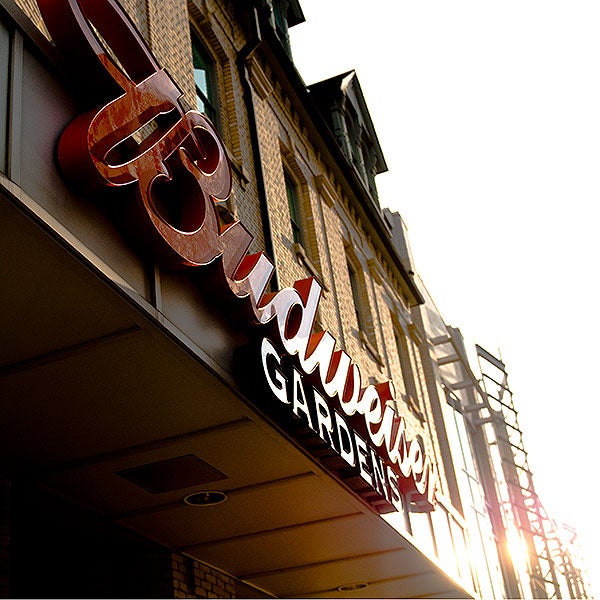Canada Life Place Behind The Scenes- Changeovers

Ever wonder how the Operations Team at Canada Life Place manages to magically switch the building setup from hockey to a full concert or basketball to the RBC Theatre with only 24 hours or less between events? The month of March was an extremely busy month for Canada Life Place, between Disney on Ice, London Knights and London Lightning games, WWE, Green Day, Chris Stapleton, The Lumineers, Annie and more, the entire Operations team was working day in and day out to make it all possible.
So what exactly goes into switching up the building set up? It’s called a “conversion” or “changeover”, during which the Operations team essentially transforms the building to be what the artist/team/show requires it to be.
Here is some of the work that goes into making the magic happen prior to the actual execution of the changeover:
- The plan and initial starting point to all changeovers begins with the Canada Life Place Event Managers when first building the CAD (computer-aided design) prior to going on sale. They will be given basic production info and that will dictate what will be required of the building come changeover time. This will include stage placement and design, floor seating layout, as well as some probable troubleshooting.
- Over the course of the show being on sale (6-8 months, sometimes longer!), new or revised info will come through the operations office and the setup and conversion details will go through a few revisions.
- Approx. 2-3 weeks from day of show the Event Managers will begin advancing finalized show/setup info with the tour and or promoter rep.
- With the information gathered from the advance, Event Managers will begin compiling all the venue specific setup info and create their Event Details to share with the building /changeover supervisors.
- The Event Managers and Changeover Manager/Supervisors will review the event details together, and in most cases the setup is done the night before the event.
As mentioned above, sometimes there is only 24 hours or less between events. Friday night could be a London Knights game and Saturday could be a sold-out concert! Now here is an example of what goes into a conversion when covering the ice for a concert:
- A few days before the conversion, the changeover supervisors post a signup sheet showing the number of people needed to complete the conversion.
- The Changeover Supervisor will review the event details and begin preparing/planning for the night’s conversion.
- Once the game is finished, the ice surface is dry scrapped for safety. This removes any snow created during the 3rd period making the ice safer to walk on and easier for the forklift to get traction as it brings out the event decking.
- Ten skids of event decking (500 pieces) are brought into the arena bowl to begin covering the ice surface. Eight glass/plexi racks are then taken out to the bowl for the removal of the glass and plexi (80 pieces of tempered glass/40 pieces of acrylic “plexi”).
- Dasher boards along the west end of the bowl are removed and retract seating (sections 101, 102, 117) is pushed in to make more room around the stage for the shows production equipment. Hockey nets and banners are raised and the player’s benches are cleared out.
- Once the hockey set up is removed, out come the chair racks! There are 38 racks with 50 event chairs on each, that’s 1,900 chairs! Chair racks are staged at the east end of the bowl until chair set the next day.
- Up next – building the stage! If you’ve been to a few different concerts you know that the stage is different for almost every performance. This part takes all hands on deck. We’re talking an average 16-18 people setting 75 stage decks and 32 legs to build a 60’w x 40’d stage. Only a few shows per year travel with their own stage that gets set the morning of the show. Lastly, the mix area (opposite stage where lighting and sound is controlled) is marked out and any risers are built.
- After the stage and floor are set, the Operations Team split up to set up the different levels of the building. Level 100 – Dressing/production rooms are set (couches, chairs, tables, lamps, rugs, coffee table & pipe and drape), merchandise table and viewing racks are put out and concourse barricades are placed if needed. Level 200 – tables are removed from the rail in the restaurant and chairs are set in their place. The community suites are set with some tables and chairs for the show crew to get some food! Level 300 – The huge score clock is hoisted up into the ceiling to prevent any obstructions during the show. Next, set the press deck, drop the reduction curtains, block off the closed portions of the concourse with pipe and drape and add an additional merchandise location if needed.
- And to finish it off the team does one final lap of the building to ensure everything is set up correctly and Canada Life Place is 100% ready for the tour load in the next morning, bright and early!
All that work and the Canada Life Place Operations team did that about 14 times between all the events in March!
Check out this time lapse video, converting from basketball to hockey to Monster Jam HERE
